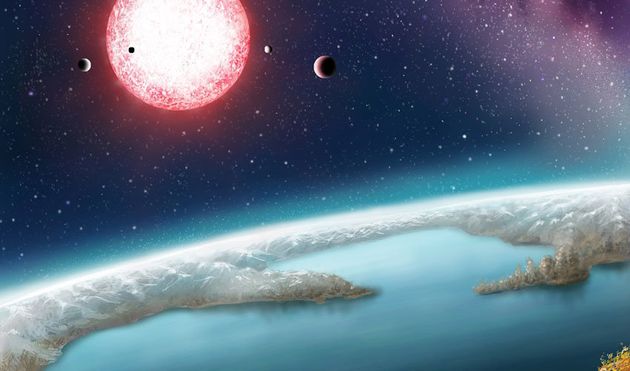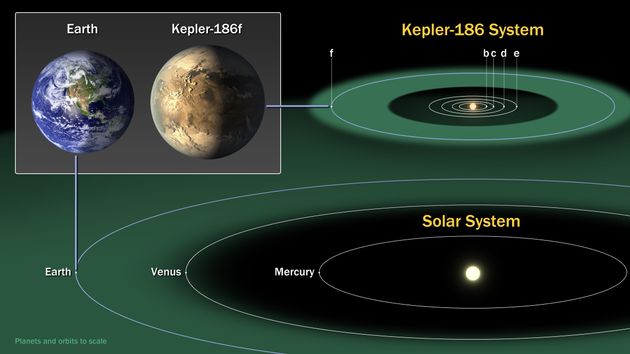Are These Rocky Worlds Where We'll Find Alien Life?
No one has found E.T. yet, but we may be getting closer.

In recent years, thousands of planets have been discovered outside our solar system, and now scientists have pinpointed 20 of these exoplanets that they say are most like Earth ― and thus most likely to have life.
The mysterious worlds, all identified originally by NASA’s exoplanet-hunting Kepler mission, are believed to be rocky planets lying within the “habitable zones” of their host stars. That means they’re likely to be just the right temperature to have liquid water, which is thought to be a key ingredient for life.
The new study doesn’t prove that life exists on any of the exoplanets. But it adds evidence that the universe is teeming with potentially habitable planets and moons. What’s more, it could help astronomers make more productive use of their limited telescope time ― and spur future research that does find evidence of extraterrestrial life.
“What we can do is focus our efforts on the planets most likely to yield evidence of extraterrestrial life, and that is what we hope our work will provide,” Dr. Stephen Kane, an astronomer at San Francisco State University and the study’s lead author, revealed the details in an email.

The Earth-like exoplanets vary in distance from Earth but are generally several hundred light-years away, Kane said. With interstellar travel still a dream at this point, that’s too far for us to visit. But, he said, “considering that the diameter of our galaxy is around 100,000 light-years, that’s still relatively close.”
To pinpoint the Earth-like exoplanets, scientists in the U.S. and France spent more than three years studying Kepler data and then performing calculations to determine the size of each exoplanet and whether it existed in the habitable zone, aka the “Goldilocks Zone.”
Why Goldilocks? On exoplanets that orbit closer to their star, water evaporates. On exoplanets with more distant orbits, water freezes. Planets in the habitable zone ― like the ones pinpointed by the new research ― are considered “just right” for life.
The research, which is to be published in Astrophysical Journal, represents “a really big milestone toward answering the key questions of how common is life in the universe,” Kane said in a written statement.
What do other scientists say? A leading expert on the search for extraterrestrial intelligence (SETI) praised the research but also offered his own nuanced appraisal.
“As exciting as this is, I think the thing that will make it into the astronomy textbooks of the future is a larger fact,” Dr. Seth Shostak, senior astronomer at the SETI Institute in Mountain View, California, told HuffPost in an email. “We now know that approximately one in five stars could host a ‘habitable planet.’ There are tens of billions of these life-friendly worlds in a typical galaxy. That’s astounding, humbling, and an obvious challenge.”
| 




